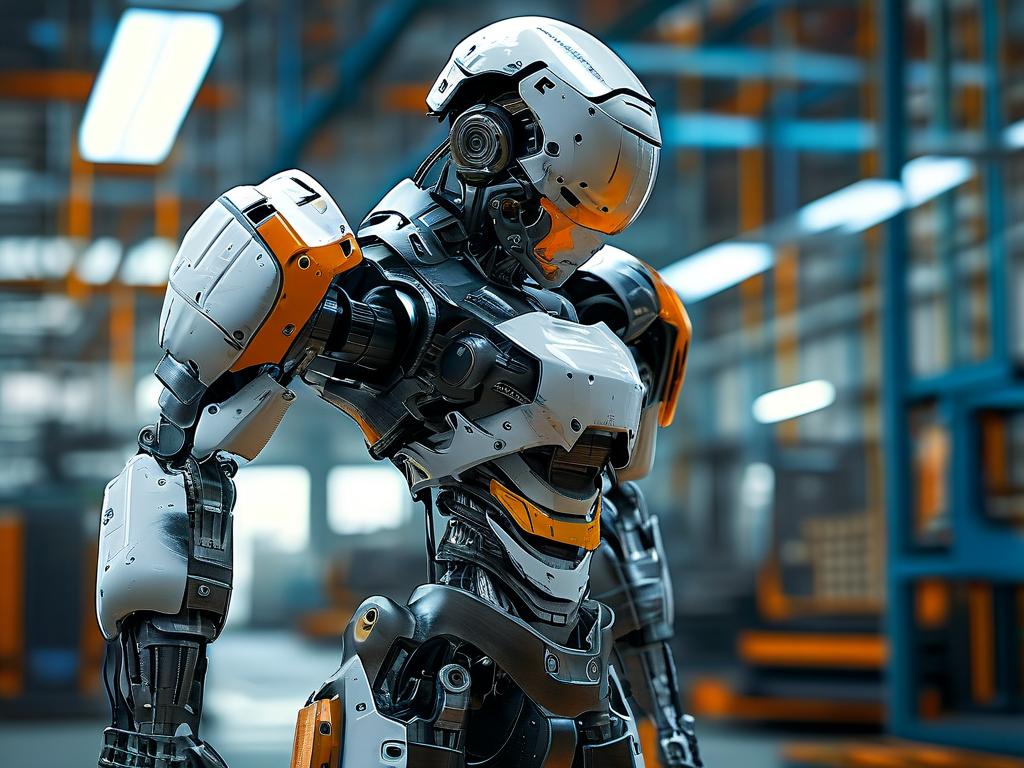The evolution of exoskeleton robotics represents one of the most groundbreaking intersections of biomechanics and artificial intelligence. While these wearable machines promise enhanced mobility for individuals with physical impairments and amplified strength for industrial workers, their widespread adoption faces persistent technical barriers that demand innovative solutions.

Power Supply Limitations
A critical challenge lies in developing sustainable energy sources for exoskeletons. Current models often rely on lithium-ion batteries that provide limited operational time – typically 2-4 hours for active systems. Researchers at MIT's Biomechatronics Lab recently tested a hydraulic-electric hybrid power system that recovers energy from human motion. Though promising, this approach adds 1.8 kg to the device weight, creating new trade-offs between endurance and portability. The quest continues for power solutions that balance energy density, weight distribution, and heat dissipation without compromising user comfort.
Human-Machine Synchronization
Achieving seamless interaction between neural signals and robotic actuators remains an engineering puzzle. Surface electromyography (sEMG) sensors used in most commercial exoskeletons struggle with signal noise interference, particularly during dynamic movements. A 2023 study published in Science Robotics revealed that machine learning algorithms can improve motion prediction accuracy by 37% when combined with inertial measurement units (IMUs). However, real-time processing of multimodal sensor data requires specialized microcontrollers that escalate production costs. Emerging technologies like graphene-based biosensors and edge computing architectures show potential for bridging this gap.
Material Science Constraints
The structural framework of exoskeletons presents conflicting requirements: rigidity for load-bearing capacity versus flexibility for natural joint articulation. Aerospace-grade aluminum alloys, while durable, impose weight penalties that reduce energy efficiency. Carbon fiber composites offer better strength-to-weight ratios but increase manufacturing complexity. Researchers at Stanford's Wearable Robotics Initiative have pioneered 3D-printed lattice structures that mimic bone trabeculae, achieving 40% weight reduction in lower-limb exoskeletons. These bioinspired designs must now prove their durability under cyclical stress conditions exceeding 500,000 motion cycles.
Adaptive Control Systems
Developing control algorithms that accommodate diverse user physiologies remains a persistent hurdle. Commercial exoskeletons like EksoNR for neurorehabilitation require manual parameter adjustments by clinicians, limiting accessibility. Deep reinforcement learning models trained on motion capture datasets from 10,000 subjects now enable automatic gait adaptation within 15 steps. Field tests in Japanese manufacturing plants revealed these systems reduce calibration time by 83% compared to traditional methods. Nevertheless, ensuring stability across variable terrain types and unexpected obstacles continues to challenge engineers.
Ethical and Regulatory Considerations
As exoskeletons approach clinical and industrial deployment, standardization becomes imperative. The absence of unified safety protocols for human-robot physical interaction has led to fragmented certification processes. The European Union's recent Robotics Liability Directive mandates force-limiting mechanisms that prevent excessive joint torque – a requirement that adds $2,300 to production costs per unit. Meanwhile, privacy concerns emerge from exoskeletons collecting biomechanical data, necessitating secure data encryption frameworks that current Bluetooth Low Energy (BLE) protocols struggle to provide.
Future Pathways
Cross-disciplinary collaboration appears vital for overcoming these challenges. The integration of soft robotics principles with traditional rigid exoskeletons has yielded hybrid designs like Harvard's "Second Skin" prototype, which uses pneumatic artificial muscles for naturalistic movement. Simultaneously, advancements in neuromorphic computing promise to reduce power consumption through event-driven signal processing. As the global exoskeleton market projects 47% CAGR through 2030, resolving these technical obstacles will determine whether these devices transition from assistive tools to ubiquitous human augmentation platforms.
The journey toward perfecting exoskeleton robotics resembles solving a multidimensional puzzle where each technological breakthrough reveals new layers of complexity. From energy storage breakthroughs to ethical AI implementations, each innovation brings us closer to realizing the full potential of human-machine symbiosis. What remains certain is that the solutions emerging from this field will redefine our fundamental understanding of human mobility and physical capability.




